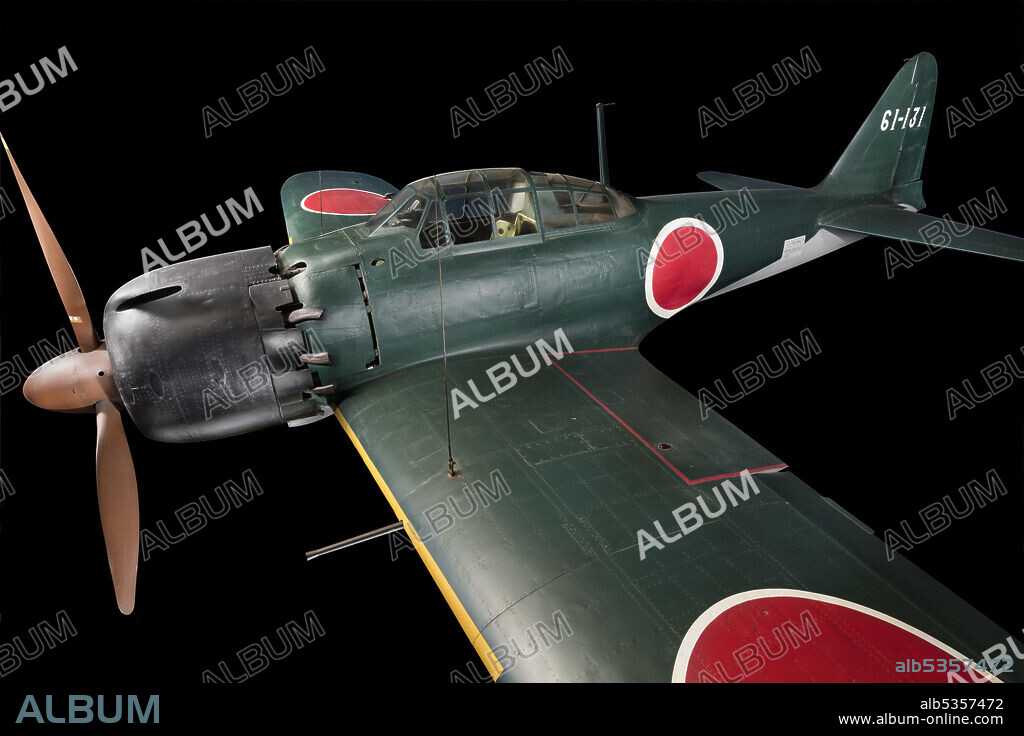alb5357472
NAKAJIMA AIRCRAFT COMPANY. Mitsubishi A6M5 Reisen (Zero Fighter) Model 52 ZEKE,1943. Creator: Nakajima Aircraft Company.

|
Add to another lightbox |
|
Add to another lightbox |



Author:
Title:
Mitsubishi A6M5 Reisen (Zero Fighter) Model 52 ZEKE,1943. Creator: Nakajima Aircraft Company.
Caption:
Single-engine, low-wing fighter. No other aircraft surpasses the Mitsubishi A6M Reisen ("ree-sin," Japanese for Zero Fighter) as the symbol of Japanese air power during World War II. Mitsubishi designed the Zero fighter but co-produced the airplane with Nakajima. The two companies built more than 10,000 Zeros between March 1939 and August 1945. Design work began in 1937 when the Japanese Navy staff directed Mitsubishi and Nakajima to submit proposals for a new aircraft to replace the Mitsubishi A5M carrier fighter (Allied codename CLAUDE). Combat trials began in China during July 1940 and by fall, Zero pilots felled nearly 100 Chinese aircraft for the loss of only two Zeros to friendly fire. We believe the A6M5 Zero Model 52 on display in the National Air and Space Museum came from a group of Japanese aircraft captured on Saipan Island in April 1944. Navy personnel removed 12 late-model Zeros from the island and sent them to the United States for evaluation. The earliest records pertaining to the Museum's Zero show that it was evaluated in 1944 at Wright Field, Ohio, and the following year at Eglin Field, Florida.
Personalities:
Credit:
Album / Heritage Art/Heritage Images
Releases:
Model: No - Property: No
Rights questions?
Rights questions?
Image size:
8688 x 5792 px | 144.0 MB
Print size:
73.6 x 49.0 cm | 29.0 x 19.3 in (300 dpi)
Keywords:
1940S • 20TH CENTURY • 2ND WORLD WAR • AEROPLANE • AIR AND SPACE MUSEUM • AIR TRANSPORT • AIRCRAFT • AIRPLANE • ALUMINUM AIRFRAME WITH STEEL • AVIATION • CENTURY • COLOR • COLOUR • CONCEPT • COUNTRY • CRAFT-AIRCRAFT • DECADE • EDUCATION • EDUCATIONAL INSTITUTION • FIGHTER PLANE • FIGHTER • FLIGHT • FORTIES • IRON (METAL) • IRON • JAPAN • JAPANESE • LOCATION • MAGNESIUM AND OTHER FITTINGS • NAKAJIMA AIRCRAFT COMPANY • NAKAJIMA HIKOKI K. K. • NAKAJIMA HIKOKI KABUSHIKI KAISHA • NASM • NATIONAL AIR AND SPACE MUSEUM • OBJECT • OBJECTS • PLANE • SCIENTIFIC INSTITUTION • SECOND WORLD WAR • SMITHSONIAN INSTITUTION • STEEL ENGINE. • TECHNOLOGY • TRANSPORT • TRANSPORTATION • UMBRELLA • WAR • WORLD WAR 2 • WORLD WAR II • WORLD WAR TWO • WW II • WW2 • WWII
 Pinterest
Pinterest Twitter
Twitter Facebook
Facebook Copy link
Copy link Email
Email

